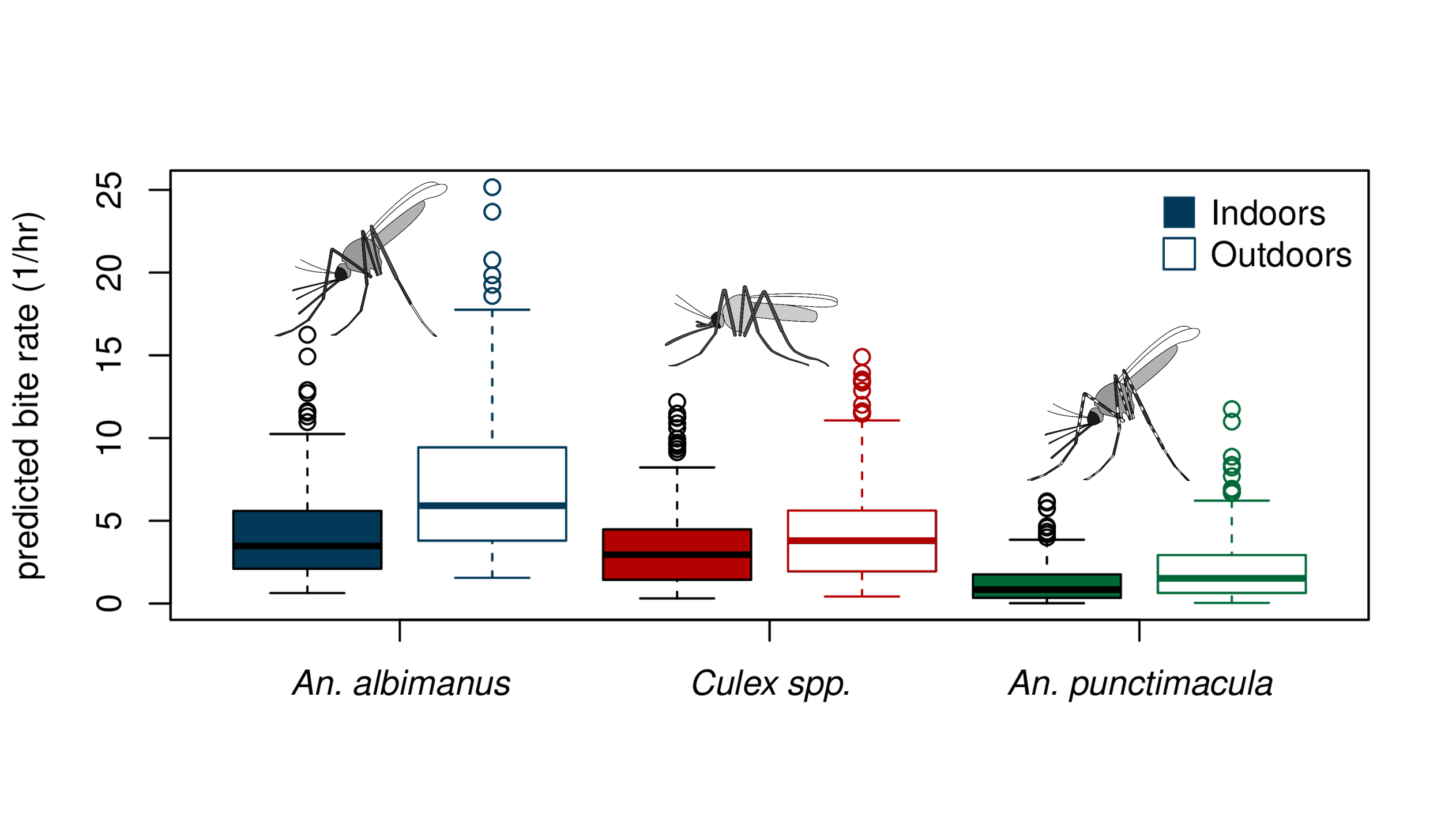Blog post by Jenny Dunn
Pathogens infect a wide range of hosts: some are complete specialists, while others infect a diversity of species. Vector-borne diseases also range in the breadth of hosts that are involved in transmission cycles, but little is known about the traits that determine these host ranges. The VectorBite working group, FutureBites, has a subgroup focused on bird malaria. As are using the avian malaria system, which has unrivaled diversity among parasites infecting vertebrates (~600 mitochondrial cytochrome b lineages of Plasmodium currently described), to identify host and pathogen traits associated with specialism and generalism in both pathogens and hosts.
Progress during the 2017 meeting at Imperial
Over the course of the meeting we spent time developing key questions to address, cleaning databases, and identifying methods to use in downstream analysis.
A main outcome for the meeting was discussing and deciding on three main objectives for the first set of analyses:
- Identify patterns of host-parasite-vector specificity through creation of matrices of malaria lineage/host specificity and malaria lineage/vector specificity
- Identify traits associated with specialist/generalist parasites, where specialism/generalism is defined either as host richness per se, or as phylogenetic host relatedness
- Identify traits associated with specialist/generalist host, where specialism/generalism is defined either as malaria parasite richness per se, or as phylogenetic parasite relatedness
To answer these questions we found and curated several datasets. These include two publicly available databases: MalAvi (which has data on malaria-bird host pairwise associations and malaria-vector pairwise associations) and avian host trait data (http://www.esapubs.org/archive/ecol/E088/096/metadata.htm). Bird host cell characteristics (curated by CF) and vector-host pairwise associations (curated by JD) were curated for this analysis. Phylogenies for bird and malaria species were constructed using maximum likelihood methods from sequence data publicly available.
We identified multiple possible definition of specialism and generalism, and defined both terms for our analyses. With AP’s expertise, we began analysing associations and writing code for further analyses.
Progress following the 2017 meeting
We are making steady progress despite time limitations, and have met over Skype since Imperial. We have been developing our thoughts around what further analyses might be possible with the datasets that already exist, and outlining the datasets along with their limitations before finalizing the analyses we want to address.
Future plans
We plan to continue and complete the analyses described above as time allows, and begin to draft a manuscript (led by CF and JD) for submission in 2018.
We plan to extend these analyses by using similar methods to examine vector-host and vector-parasite pairwise associations and associated traits, once vector trait data are available through the VecTrait database.
Group members: Jenny Dunn, Christina Faust, Andrew Park, Ana Rivero, Richard Hall, Sylvain Gandon


